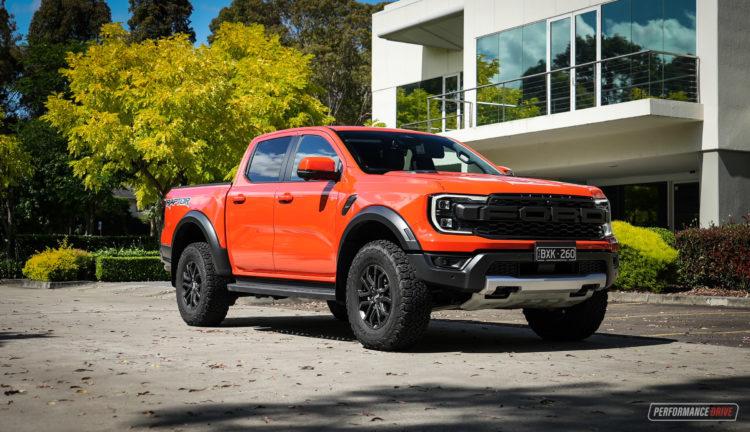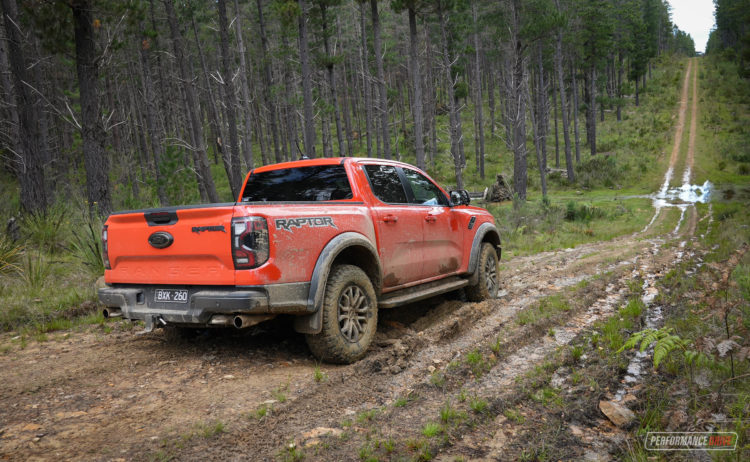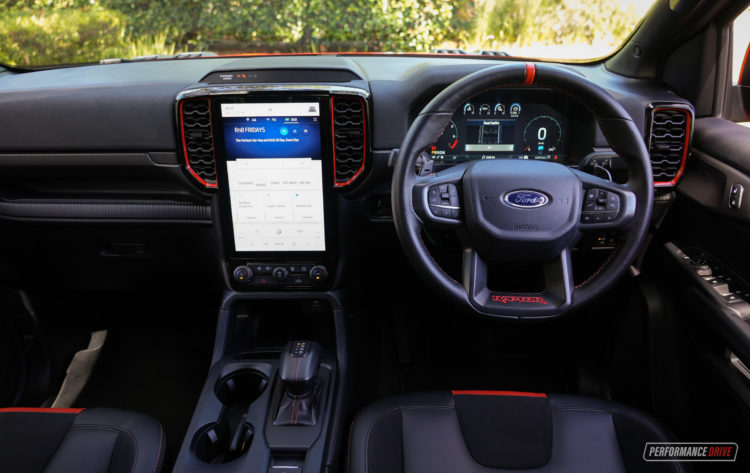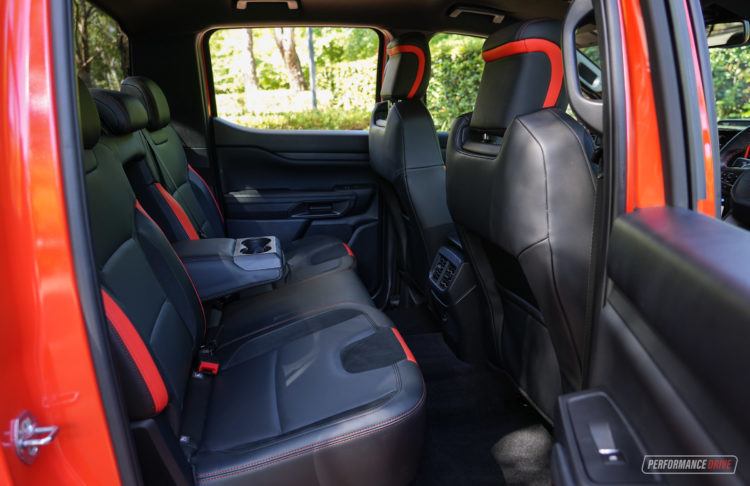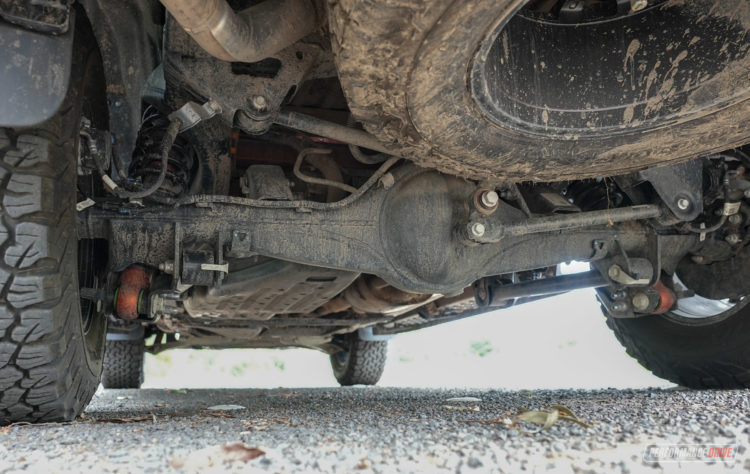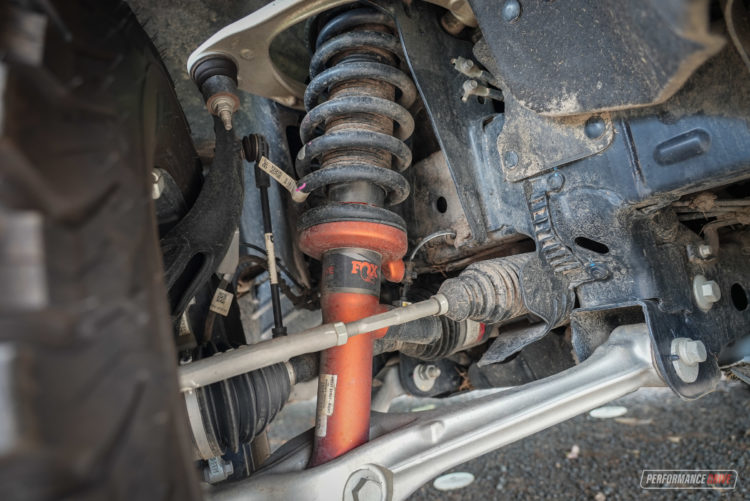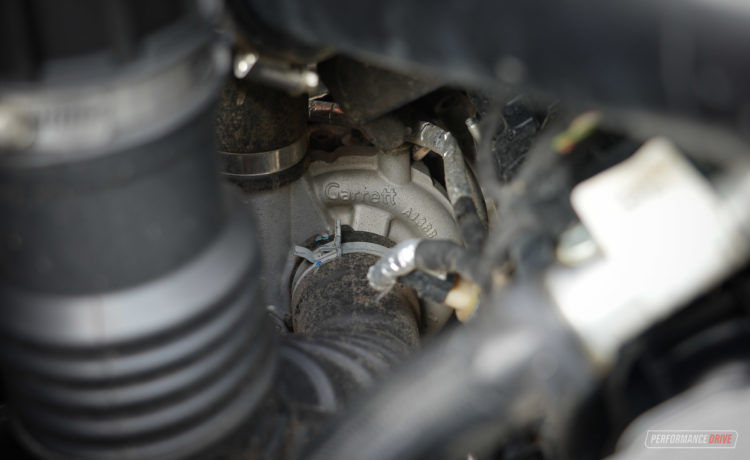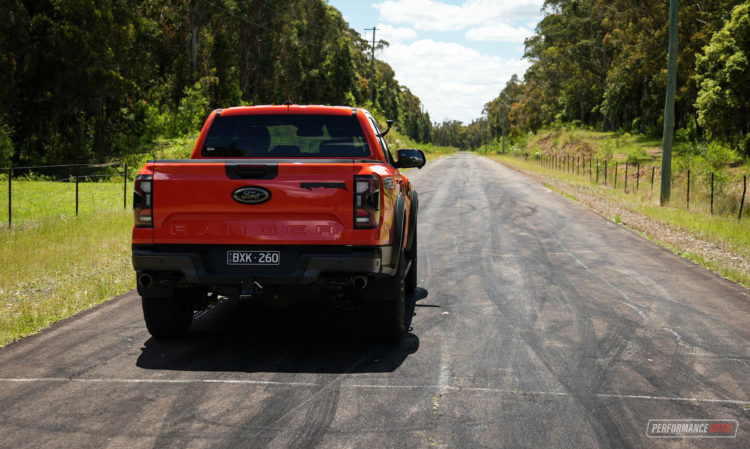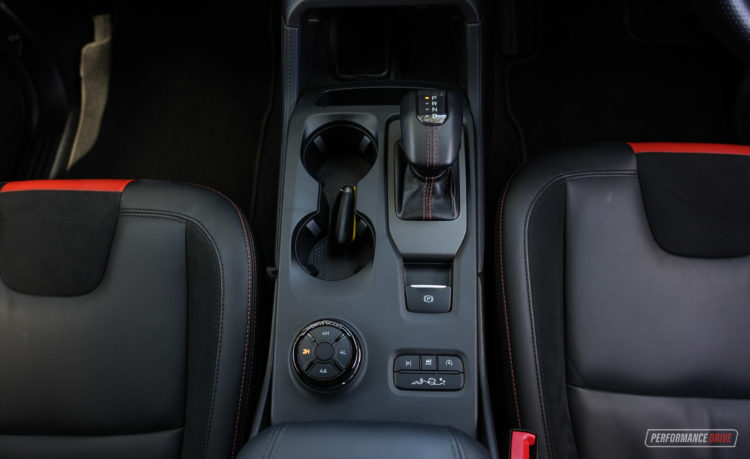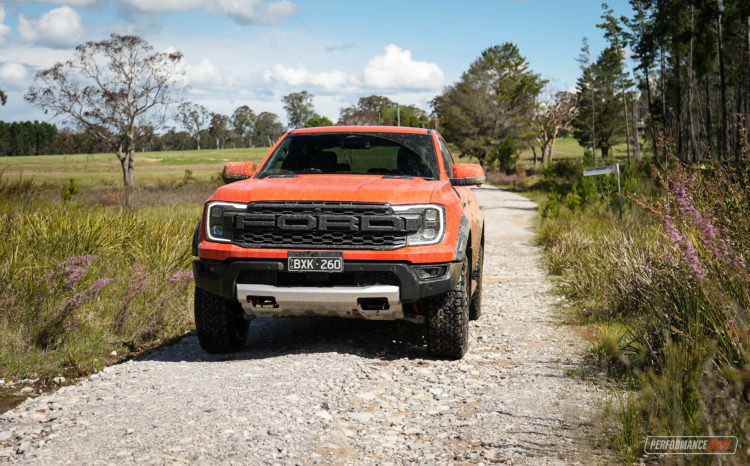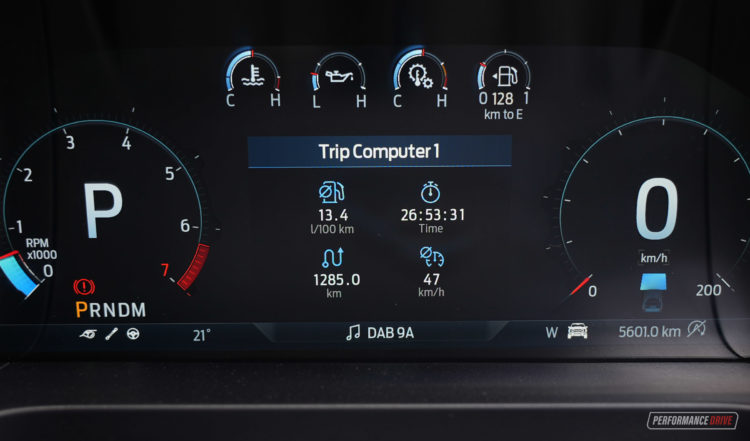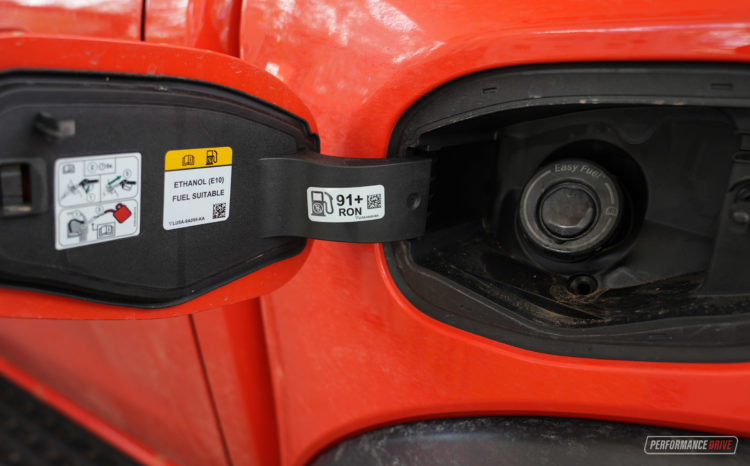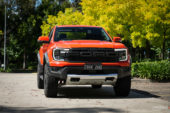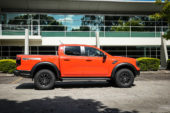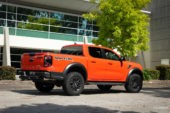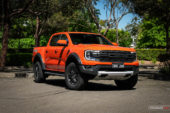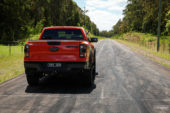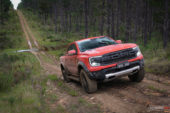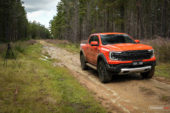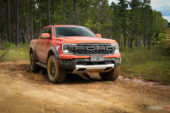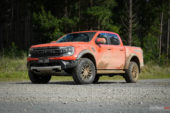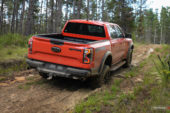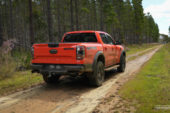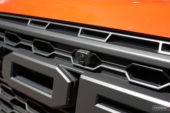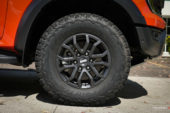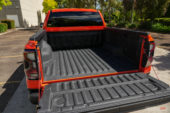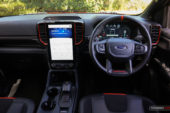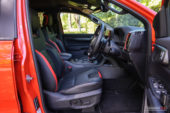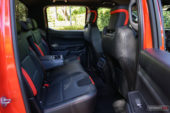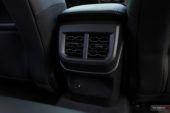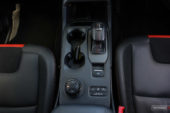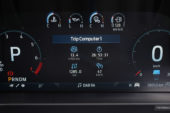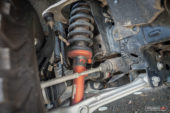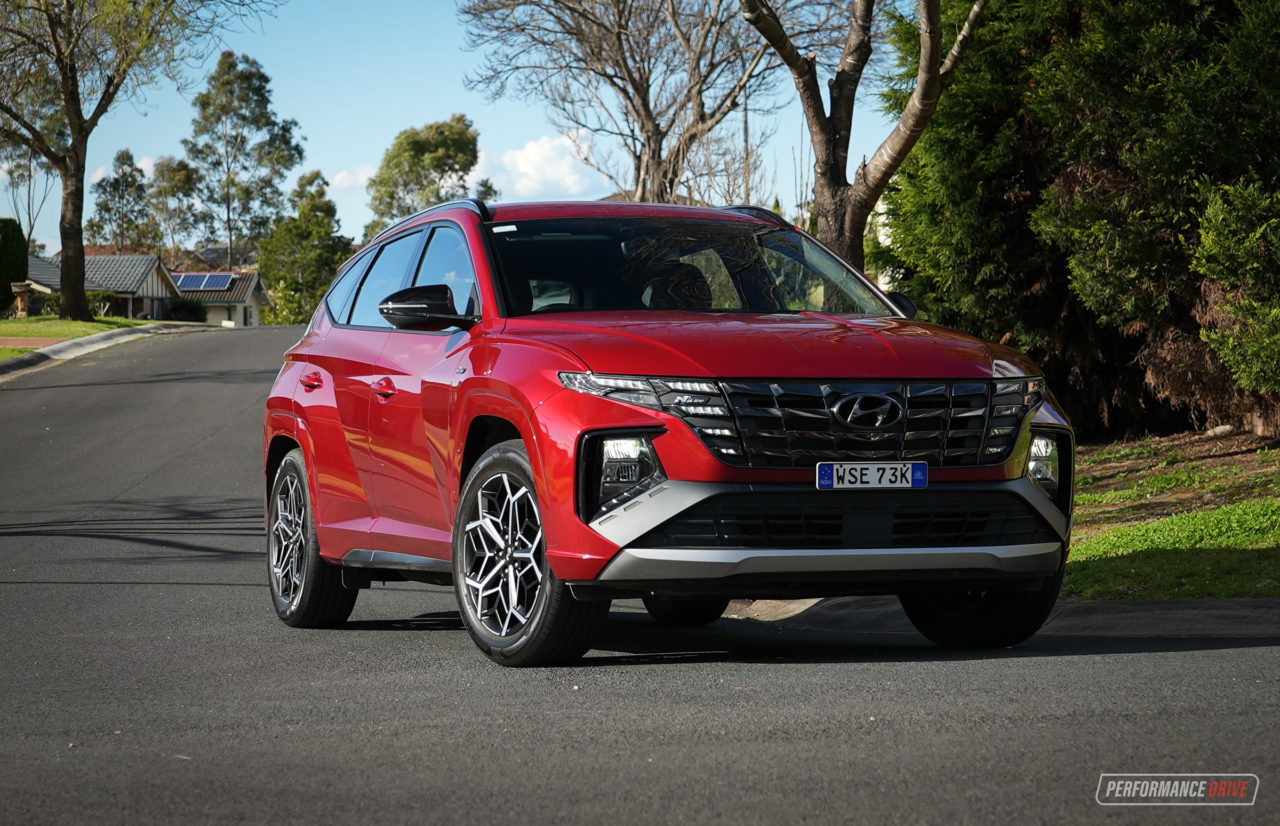How can you argue with this? Not only is it physically one of the most imposing vehicles currently on the market, the 2023 Ford Ranger Raptor is also one of the most competitive in terms of packaging, versatility, capability and overall enjoyment.
The new Raptor starts from $86,790, excluding on-roads. Although that might seem like a lot of money, in today’s market, it’s really not. A top-line Hyundai or Kia is around the same price, and if you want a mid-size premium SUV, many of them start from around this price range too, let alone moving up the lineup.
Compared with other like-minded utes, there is currently nothing that comes close to offering this level of performance, technology, and on-road comfort. Not as a combination of all in one package anyway. In that regard, it should cost at least $10-15k more than the nearest top-line rivals, shouldn’t it? We also think Ford Australia could have listed this at $100,000, and buyers would still be lining up out the door. But they didn’t. So good on them.
2023 Ford Ranger Raptor – THE SPECS
[column width=”47%” padding=”6%”]Engine: 3.0-litre twin-turbo V6 petrol
Output: 292kW@5650rpm / 583Nm@3500rpm
Transmission: 10-speed auto
Drive type: Rear-/four-wheel drive, locking front and rear diffs
Wheels: F & R: 17×8.5, 285/70
ANCAP: Not tested
Tare weight: 2422kg
Power-to-weight: 8.29:1 (kg:kW)
Official fuel economy: 11.5L/100km
Economy during test: 13.4L/100km
Fuel capacity/Type: 80L/91 RON[/column] [column width=”47%” padding=”0″]Power efficiency: 25.39kW:L/100km
0-60km/h: 2.87 seconds*
0-100km/h: 5.79 seconds*
60-110km/h: 3.84 seconds*
1/4 mile: 14.21 seconds at 158.9km/h*
Max acceleration: 0.855g
100-0km/h braking: 3.63 seconds at 46.70 metres*
Max deceleration: -1.127g
Decibel at idle (quiet/Baja modes): 37/39*
Peak decibel at 60-100km/h: 82/86*
Priced from: $86,790[/column][end_columns]
* Figures as tested by PerformanceDrive on the day. Factory claims may be different
2023 Ford Ranger Raptor – THE PACKAGE
Imagine a monster truck for the road. That’s what the Raptor is like. Every area is formed to fit that character, and is thus always entertaining and never boring. The front seats are inspired by a fighter jet seat (Lockheed Martin F-22 Raptor), with big but clean chunks bulging out to support your waist and legs. They are comfortable and not just sporty. And the rest of the interior is decorated in dark grey and vibrant orange, with decent quality materials in most areas.
It is a step up to get in, as you’d imagine, but once you’re in it actually feels more like an SUV than a big truck. It feels like the seat is mounted low near the floor, and the cabin orientation is more like a wagon, wide and spread out rather than tall and upright like typical ute. The dash also encompasses the seating layout in a way that makes you feel inside the vehicle rather than on the vehicle.
Up on the dash is Ford’s latest 12-inch vertical touch-screen. It’s huge, and it’s filled with all kinds of useful apps and functions, including detailed vehicle settings and a display for the external off-road cameras. There’s also an electronic gear shifter that can automatically shift itself into park when the vehicle is stopped (for safety), and a cool drive mode dial on the console. Although, some drive settings can also be engaged via the touch-screen.
Digital radio, wireless Android Auto and Apple CarPlay, surround-view parking cameras, in-built sat-nav are all standard. The Raptor also comes with a beefy 10-speaker B&O sound system as standard. Many of these features are often optional extras on premium vehicles, pushing the initial price tag even higher. The inclusion of these helps with the value idea we were expressing earlier.
As before, the Raptor features a bespoke exterior compared with the regular Ranger. There’s a big front grille with giant ‘FORD’ lettering across the middle, a robust front bumper bar complete with proper recovery points embedded in, heavily-bolstered wheel arches in dark grey, special side steps, and functional front guard vents, and then a customer bumper bar at the back with more recovery points.
Due to the hardcore Fox Racing suspension fitted underneath, the payload and braked towing ratings are significantly reduced compared with the regular lineup; from 951kg in the Wildtrak to just 655kg, and from 3500kg to 2500kg, respectively. But the Raptor features a tough tub-liner, a powerpoint in the back, and an available electric roller shutter, providing plenty of working versatility. Underneath you’ll find the spare wheel.
Ground clearance is rated at a whopping 272mm, and it can swim through up to 850mm of water. Even though it is still based on the old T6 platform, many areas and most of the hardware has been improved or strengthened. One of the key changes over the predecessor is a switch to coil-over Fox Racing Live-Valve 2.5 shocks, front and back. The front remains independent with a live axle rear. There’s also a thick bash plate at the front to protect the important bits.
2023 Ford Ranger Raptor – THE DRIVE
Perhaps the biggest attraction to this new beast is the engine. It’s a 3.0-litre twin-turbo V6 petrol developing 292kW and 583Nm, making it the most powerful vehicle in its class. It sounds awesome, if a bit hollow and drony at some points of the rev range. It probably doesn’t need four different exhaust modes, either.
Yep, there are four different modes to choose from. And to be honest, we couldn’t tell much difference between Sport mode and Baja mode. Our decibel gauge showed readings of 37dB and 39dB at idle, flicking between Quiet and Baja, and then peaking at 82 and 86dB during full throttle overtaking.
Low-end torque is good from this engine but not as responsive as a V8. In fact, max torque is not achieved until 3500rpm. That’s quite peaky for a modern turbo-petrol engine, let alone a high-performance unit. That doesn’t mean it’s not adaptable, though. Plenty of grunt is available at lower revs, and the 10-speed auto means there is always the right ratio for any situation.
Peak power is reached at a fairly low 5650rpm. Again, some might expect a high-performance petrol motor to reach its maximum power at higher revs. It doesn’t feel like it wants to rev much higher, but the unit also sounds like it is revving higher than what you might assume.
Using a private road and a Racelogic Vbox Sport we clocked a best 0-100km/h time of 5.79 seconds, and crossed the quarter mile in 14.21 seconds at 158.9km/h. These are easily the quickest times we’ve ever recorded from a dual-cab ute like this. Really, only the RAM 1500 TRX ‘Hellcat’ V8 would be quicker. Our quickest results were achieved in Sport mode and in 4A.
According to our performance results database, other cars that have achieved around 5.79 seconds in the past include the 2021 Genesis G80 3.5T (5.77), 2016 Jaguar F-PACE S 35T (5.73), 2022 Hyundai Kona N (5.69), and 2022 Subaru WRX manual (5.93). In fact, it’s not too far off the 2017 Ford Mustang GT we tested (5.48). It also betters the 2023 Toyota GR86 (6.18), the 2019 Renault Megane RS Cup auto (5.95), and equals the 2018 Nissan 370Z Nismo manual (5.79). In other words, it has proper sports car credentials.
In terms of modes, the new Raptor offers nine different main driving modes; Normal, Eco, Tow, Slippery, Mud/Ruts, Sand, Sport, Baja, and Rock Crawl. The Baja mode is only for off-road use as it locks the front and rear differentials. Rock Crawl goes into low range, however you can manually and separately select low range as well.
In Sport mode, in RWD, on the road, the Raptor handles exceptionally well for this type of vehicle. Turn-in is sharp and relatively precise (considering its big tyres), and the platform always remains flat and stable. You might expect some kind of wobbly, unsettled characteristics when pushing it hard between twisty turns, but it really doesn’t. The front end is especially well-sorted in our opinion.
Another big praise is the ride quality. This is the most comfortable ute in its class, there is no doubt about it. The Fox suspension might be set up for absorbing rally jumps and hardcore impacts, but it also does wonderfully when it comes to on-road refinement. You won’t hear any crude crashes or thuds like you do on some heavy-duty, live-axle-equipped utes, with minor bumps and corrugations hardly felt at all. We guess these big ‘Baja Champion’ tyres are partly to thank for this, too. These tyres are not especially good at maintaining short stopping distances, however, with our Vbox recording the emergency 100-0km/h stop in a best of 46.70m – far from impressive.
Obviously the Raptor’s best feat is its off-road capability. We had so much fun testing this vehicle, we forgot to look for any downsides. But seriously, it is hard to fault. There is plenty of flex and wheel travel, excellent under-body clearance, and the external cameras help during steep crests and when trying to line up the wheels precisely between ruts and so on – there’s even a water-spray washer for the front camera, automatically activated when the windscreen washers are flicked. It is an off-road master, specifically designed (and tested) for conquering very rugged conditions. And it does, with ease.
If we had to pick something to criticise, the fat tyres and generous overall length (5381mm) and width (2028mm) of the vehicle are not ideal for tight and technical scenarios, compared with some more nimble utes in this class. The Mitsubishi Triton has always been one of our favourites for this, because it is relatively narrow and it, too, comes with extensive driveline preparation such as diff locks. But then, the Raptor is not really designed for such conditions. This is more for higher-speed, bush-bashing fun.
It loves playing around in the mud, and with the locking differentials engaged and in Baja mode, we found it virtually impossible to get stuck in. We especially like having the power to rip out of thick and boggy situations. Although we didn’t try it, we think sand driving would be a lot of fun as well because you can keep that petrol engine revving nicely and it doesn’t feel strained like a diesel.
As for fuel economy. You guessed it. It’s not the best. The official average rate is 11.5L/100km and our week of testing returned an average of 13.4L/100km over a distance of 1285km. If you compare it to a V8 SUV or something, this is not that bad. And you probably should compare it to a vehicle like that as this weighs 2422kg (tare) and the engine develops 292kW. The maths is all there.
If anything, 12-13L probably isn’t terrible if you’ve just jumped out of a RAM 1500 or Chevrolet Silverado with a petrol V8 (of similar performance and so on). With an 80L fuel tank on board that translates to a theoretical range of 696km, or 597km based on our 13.4 average. As a bonus, it is compatible with 91 RON and E10 petrol.
2023 Ford Ranger Raptor – THE VIDEO
2023 Ford Ranger Raptor – THE VERDICT
There are so many things to like about this beast. It’s fun, ruthlessly capable, diverse, and yet it rides extremely well on the road and handles like a good SUV. We think the price is also quite reasonable given the level of performance and on-board tech and features. It’s also great to finally experience some excitement in the engine department, compared with the previous Raptor – and even some of the wannabe Raptors out there at the moment. So, should you buy one?
Well, if you like dignified motoring and going about unnoticed, and easily fitting in tight car parks, then this is not for you. This is loud, proud, and large. It doesn’t need to apologise though because this is the kind of vehicle it was born to be. Either love it and accept it, or move on to something else.
Obviously its low payload and towing ratings are going to be a categorical hindrance to some shoppers in this segment, and that’s also fair enough. This is not primarily designed to be a workhorse. Instead, we like to think of this as the all-in option. It does exactly what it says on the tin, completely and wholeheartedly. And for that we will always respect it.
[column width=”47%” padding=”6%”]PROS:
– Most powerful in its class
– Most comfortable in its class
– Most capable in its class
– Arguably the smartest in its class; blends technology and versatility
– Reasonable price and value; Ford could have charged $100k and buyers would still be lining up out the door
[/column] [column width=”47%” padding=”0″]CONS:
– Lacks dignity; it’s not the kind of car you’d want to drive to a funeral
– Long stopping distances; big tyres, only two-piston front brakes
– Delivery wait times[/column][end_columns]
As always, if you’re thinking about buying a new car don’t forget to click here to speak with our car buying specialists.
